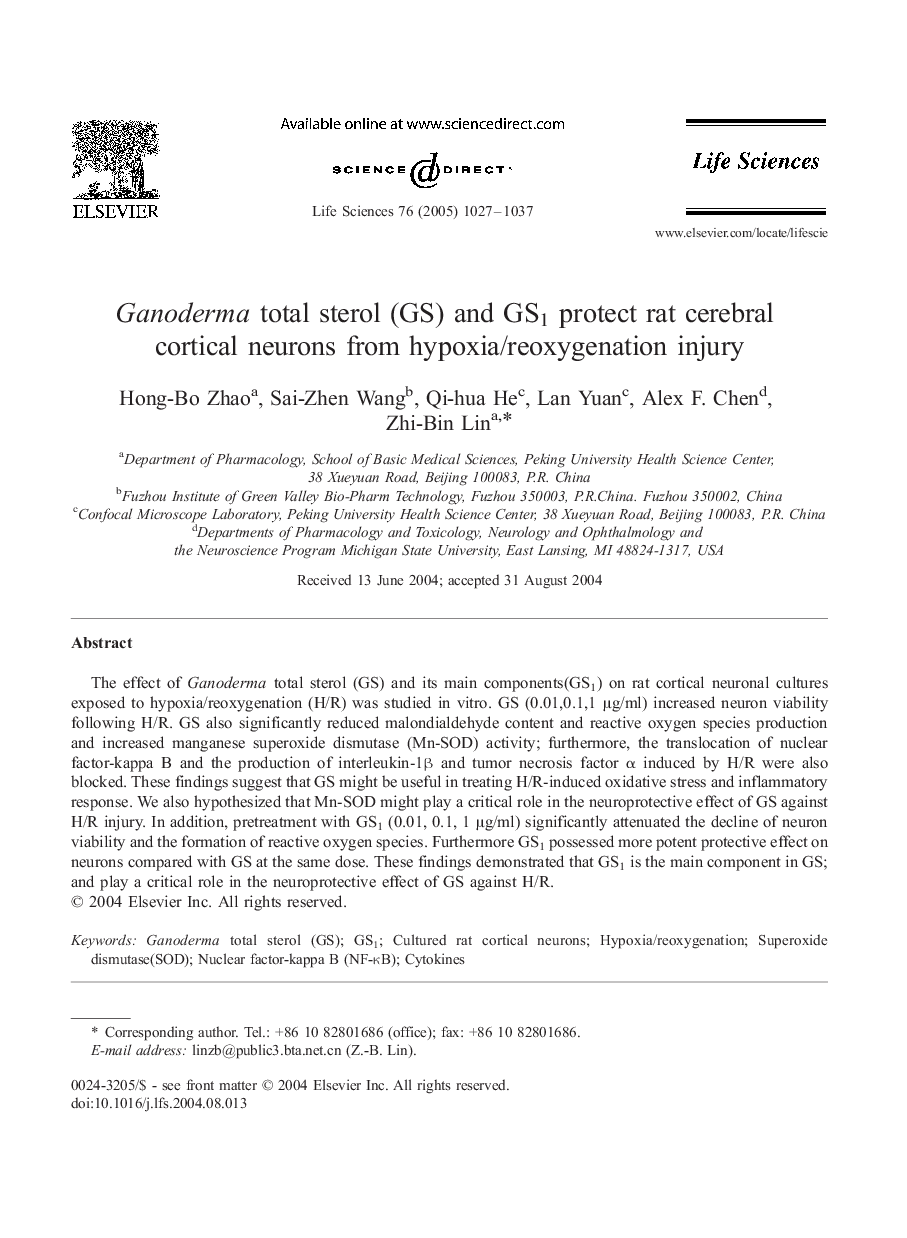| Article ID | Journal | Published Year | Pages | File Type |
|---|---|---|---|---|
| 9012986 | Life Sciences | 2005 | 11 Pages |
Abstract
The effect of Ganoderma total sterol (GS) and its main components(GS1) on rat cortical neuronal cultures exposed to hypoxia/reoxygenation (H/R) was studied in vitro. GS (0.01,0.1,1 μg/ml) increased neuron viability following H/R. GS also significantly reduced malondialdehyde content and reactive oxygen species production and increased manganese superoxide dismutase (Mn-SOD) activity; furthermore, the translocation of nuclear factor-kappa B and the production of interleukin-1β and tumor necrosis factor α induced by H/R were also blocked. These findings suggest that GS might be useful in treating H/R-induced oxidative stress and inflammatory response. We also hypothesized that Mn-SOD might play a critical role in the neuroprotective effect of GS against H/R injury. In addition, pretreatment with GS1 (0.01, 0.1, 1 μg/ml) significantly attenuated the decline of neuron viability and the formation of reactive oxygen species. Furthermore GS1 possessed more potent protective effect on neurons compared with GS at the same dose. These findings demonstrated that GS1 is the main component in GS; and play a critical role in the neuroprotective effect of GS against H/R.
Related Topics
Health Sciences
Medicine and Dentistry
Cardiology and Cardiovascular Medicine
Authors
Hong-Bo Zhao, Sai-Zhen Wang, Qi-hua He, Lan Yuan, Alex F. Chen, Zhi-Bin Lin,
